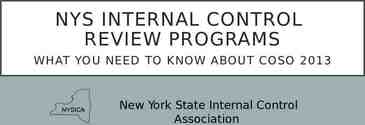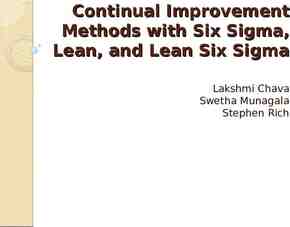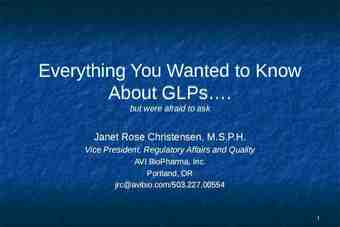Review of expected inflation Initial network perspectives Craig de
16 Slides665.49 KB
Review of expected inflation Initial network perspectives Craig de Laine, Chair, ENA Rate of Return Working Group AER Public Forum, 14 June 2017
Approach Important that regulatory approaches and models that play a role in real customer outcomes are transparent, well-understood and have broad stakeholder support ENA and its members come to the forum with desire to listen to stakeholders about the choices presented by the review Our objective is a best estimate important to providing opportunity to recover efficient costs Keen to engage in collaborative opportunities in the review Open to consider joint work as move to options analysis Engagement with Consumer Reference Group and Consumer Challenge Subpanel Share/discuss findings of draft report with interested stakeholders
Issue 1 – Best estimate Significant and sustained differences between: 1. Market based measures of expected inflation and current AER approach 2. Expected inflation under current AER approach and actual out-turn inflation Issues are linked: Reaching the best estimate of expected inflation that is practically possible will help reduce size of potential divergences between expected inflation and actual inflation Focus is on ensuring prices reflect efficient costs and businesses have an ability to recover those costs Need to ensure expected inflation estimates are ‘fit for purpose’ for current macroeconomic environment and plausible futures CEPA will provide some further initial perspectives on their work
Issue 2 – Regulatory treatment Different options for changing the treatment of inflation in regulatory framework – need to be carefully thought through Maintain focus on outcomes needed: Transparency Predictability Avoidance of unnecessary volatility (avoiding a ‘lottery’ outcome) Networks do not have a single proposed solution to the issue of achieving an internally consistent approach (PTRM/RFM) Keen to hear stakeholders initial perspectives on options and trade-offs Deferring of the commencement date of any changed approach could ensure any change is clearly symmetrical and forward-looking
Closing comments ENA and its members are keen to continue discussions with all stakeholders Please contact any of us to further explore or discuss the issues Craig de Laine – [email protected] Garth Crawford – [email protected] Joel Cook – [email protected]
Cambridge Economic Policy Associates Estimate of market expected inflation AER workshop Joel Cook 14 June 2016
Agenda 1 Objective of the study 2 Criteria 3 Case studies from other jurisdictions 4 Empirical evidence Page 8
Objectives The focus of this study is on Issue 1: Approach that will deliver the best estimate With regard to the NER and NGR: 1. Establish criteria around identifying best practice approaches to estimating expected inflation. 2. Review practices in other jurisdictions. 3. Taking Australian conditions into account, identify options that are most likely to lead to the most empirically accurate inflation expectations and meet best practice. 4. Assess the options against the criteria, clearly identifying any advantages and disadvantages of each approach. 5. Identify the approach that gives rise to the best estimate of market expected inflation. Page 9
Criteria We are intending to assess the approaches against the following criteria Congruence with the regulatory framework Congruence with the market expected inflation Robustness Transparency and replicability Page 10
Ofgem, RIIO GB energy regulator Uses a ‘real’ revenue model (real WACC and indexed RAB) Two inflation estimates used: Cost of debt – breakeven inflation (10-year RPI) Cost of equity – RfR implicitly uses breakeven inflation (10-year RPI) Revenues – Short term – HM Treasury Forecast for the UK economy (based on a summary of independent entities). Long-term – fixed forecast based on BoE CPI target and uplift to reflect the difference between RPI and CPI. The latter is trued-up (with a two year lag) to actual inflation (and time value of money applied). Ofgem acknowledge that there is a liquidity premium in the index-linked gilts, however it considers this to be offset by the inflation risk premium in conventional gilts. Page 11
Ofwat, PR14 England and Wales Water regulator Uses a ‘real’ revenue model (real WACC and indexed RAB) Two inflation estimates used: Cost of debt – relied on a mix of evidence, but greatest weight placed on breakeven inflation. It reviewed both 10-year and 20-year gilt breakeven estimates. An adjustment was made for inflation risk premium. (Ofwat noted that evidence from the Office for Budget Responsibility had higher forecasts over the price control period, but it considered that the market breakeven estimates supported its long-term view.) Cost of equity – implicitly use breakeven inflation through us of ILGs. Revenue – Consensus Economics forecasts. True-up applied to revenue forecasts for the difference between actual and forecast. Page 12
New Zealand Commerce Commission Multi-sector regulator Nominal WACC model. Inflation forecast: Reserve Bank of New Zealand forecasts – two to three years For the remainder of the price control inflation is transitioned to the mid-point of RBNZ’s target over three years. 1-3% target (since 2012 RBNZ has an explicit objective of keeping it near 2% over the medium term). NZCC noted a number of issues with breakeven inflation: (1) lack of short dated index-linked bonds; (2) inflation risk premium inherent in nominal bond yields; and (3) liquidity premium inherent in index-linked bond yields. Page 13
IPART & ERA State-based regulators IPART: Uses geometric average of one year RBA forecast and nine years of the mid-point of the RBA target. Previously used breakeven inflation (pre-2009) and then swaps until 2014. Reviewed a range of approaches in 2015, and confirmed its decision in March 2015. ERA: Five-year breakeven approach used for expected inflation. Derived in line with the risk-free rate Page 14
What has happened Figure 1: AER determinations relative to market-based inflation estimates Source: Bloomberg, AER, CEPA analysis Prior to 2015 the AER approach and breakeven inflation would have resulted in similar decisions. Post, 2015 the AER approach has diverged from the breakeven inflation estimates. Page 15
Contact Us CAMBRIDGE ECONOMIC POLICY ASSOCIATES Level 20, Tower 2, 201 Sussex St Sydney NSW 2000 Tel: (2) 9006 1307 [email protected] www.cepa.net.au Page 16





















